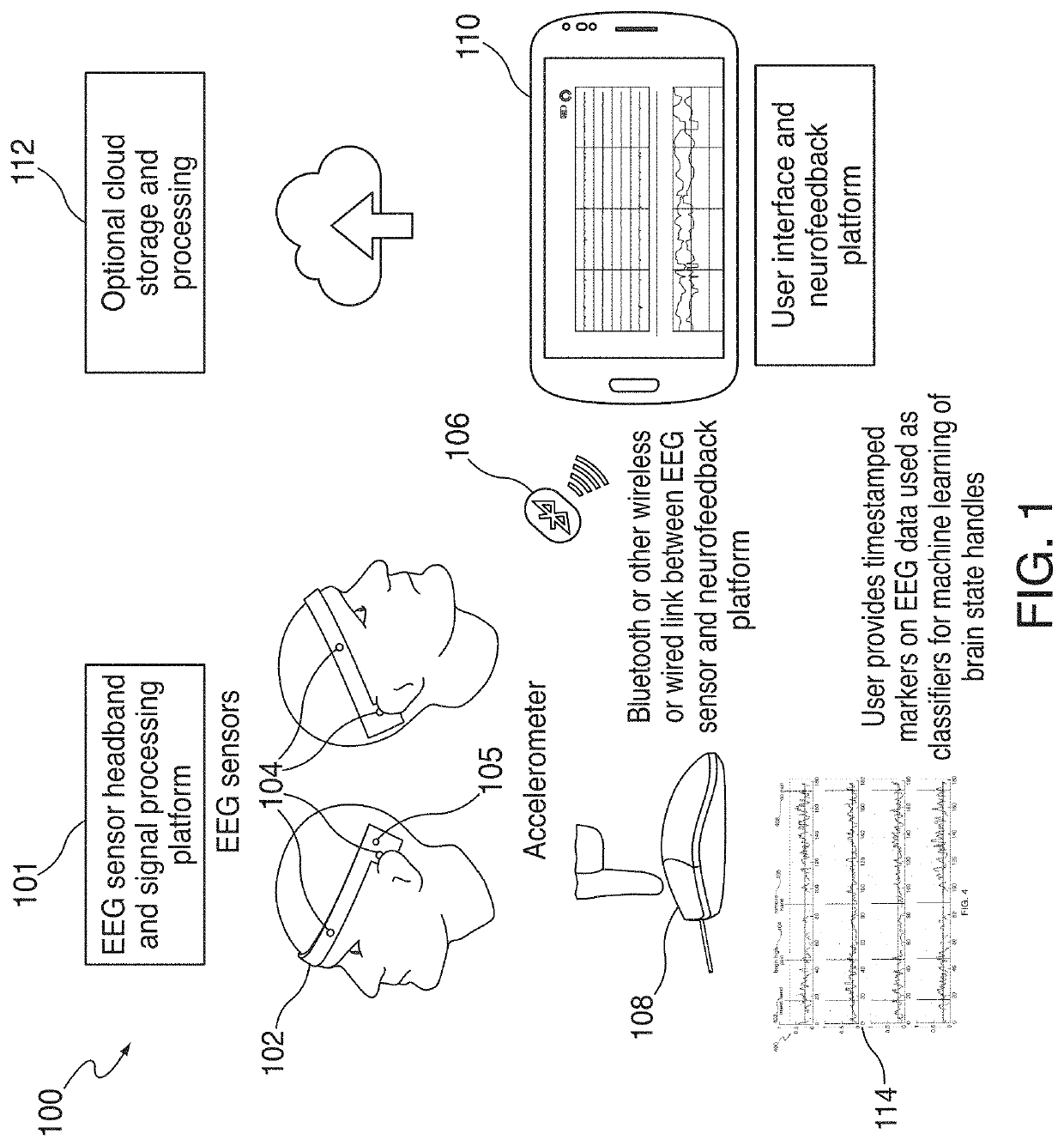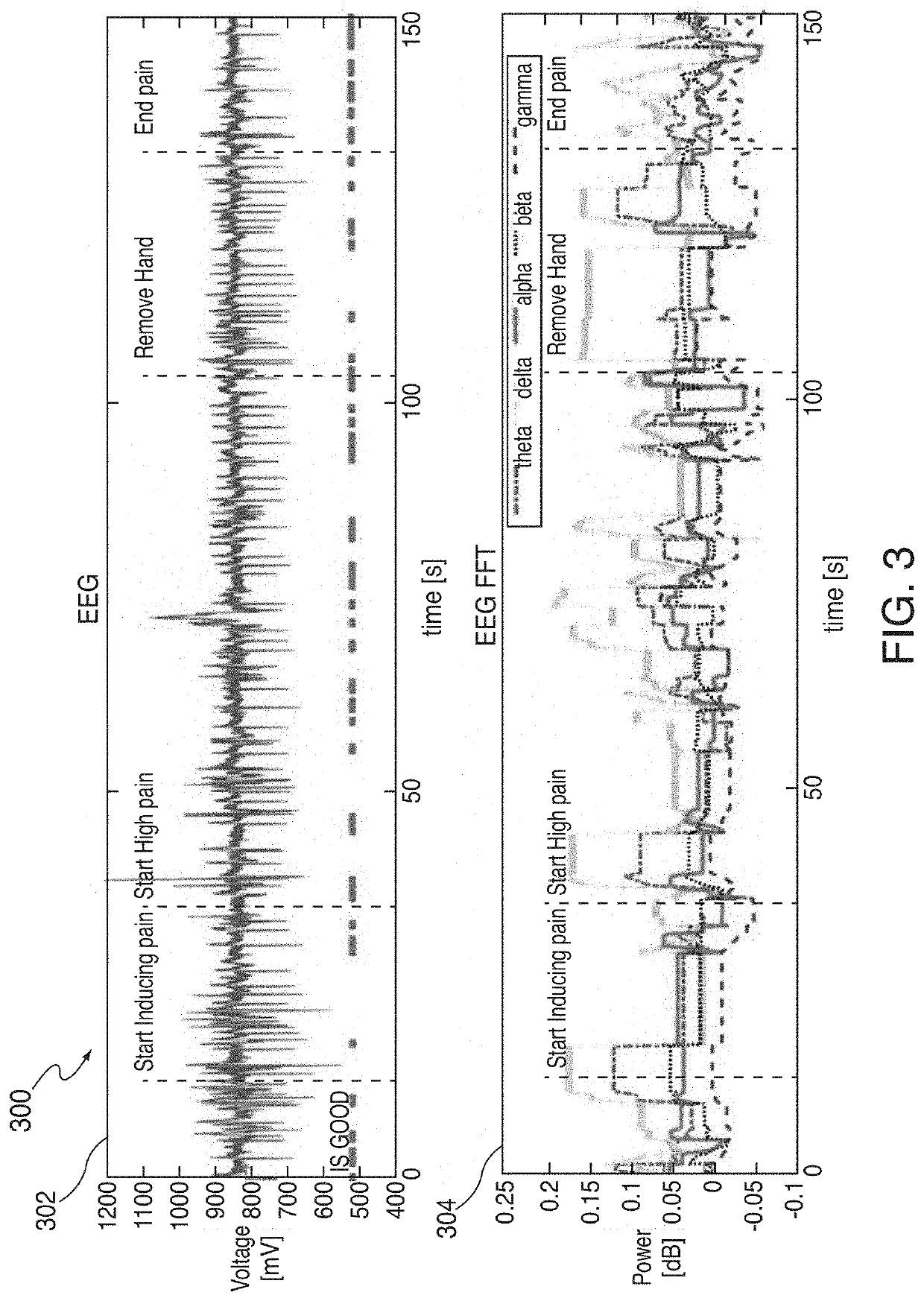Methods, systems, and apparatus for self-calibrating EEG neurofeedback
a self-calibrating and neurofeedback technology, applied in the field of methods, systems and apparatus for self-calibrating eeg neurofeedback, can solve the problem that the robustness of self-reported perceptual states corresponding to extractable features in a person's own eeg data is not easily transferable to another person, and achieves low-computational overhead applications, sufficient data fidelity, and versatility and reliability.
- Summary
- Abstract
- Description
- Claims
- Application Information
AI Technical Summary
Benefits of technology
Problems solved by technology
Method used
Image
Examples
Embodiment Construction
SCP Principle
[0030]The principle behind self-calibrating protocols (SCP) is that of time-stamping regions in a time-series waveform input designating areas of “up” and in one mode by default calling everything else “not up” or in an enhanced mode using another designation for regions timestamped as “down”. Once regions in the time series of the minimally processed EEG signal have been identified in this manner, off-the shelf machine learning algorithms are deployed to identify minimal handles to use in either traditional neurofeedback settings (replacing the “up” and “down” ordinarily calibrated to an average by the now personally selected features). The key advantage of SCP is that the NFB no longer needs to correspond to a mechanistically defined neurological correlate. In other words, it is no long necessary to identify a specific ratio of brain wave frequencies as corresponding to a universally applicable “calm” or “alert” or other perceptual state. One is free to define arbitra...
PUM
 Login to View More
Login to View More Abstract
Description
Claims
Application Information
 Login to View More
Login to View More - R&D
- Intellectual Property
- Life Sciences
- Materials
- Tech Scout
- Unparalleled Data Quality
- Higher Quality Content
- 60% Fewer Hallucinations
Browse by: Latest US Patents, China's latest patents, Technical Efficacy Thesaurus, Application Domain, Technology Topic, Popular Technical Reports.
© 2025 PatSnap. All rights reserved.Legal|Privacy policy|Modern Slavery Act Transparency Statement|Sitemap|About US| Contact US: help@patsnap.com



